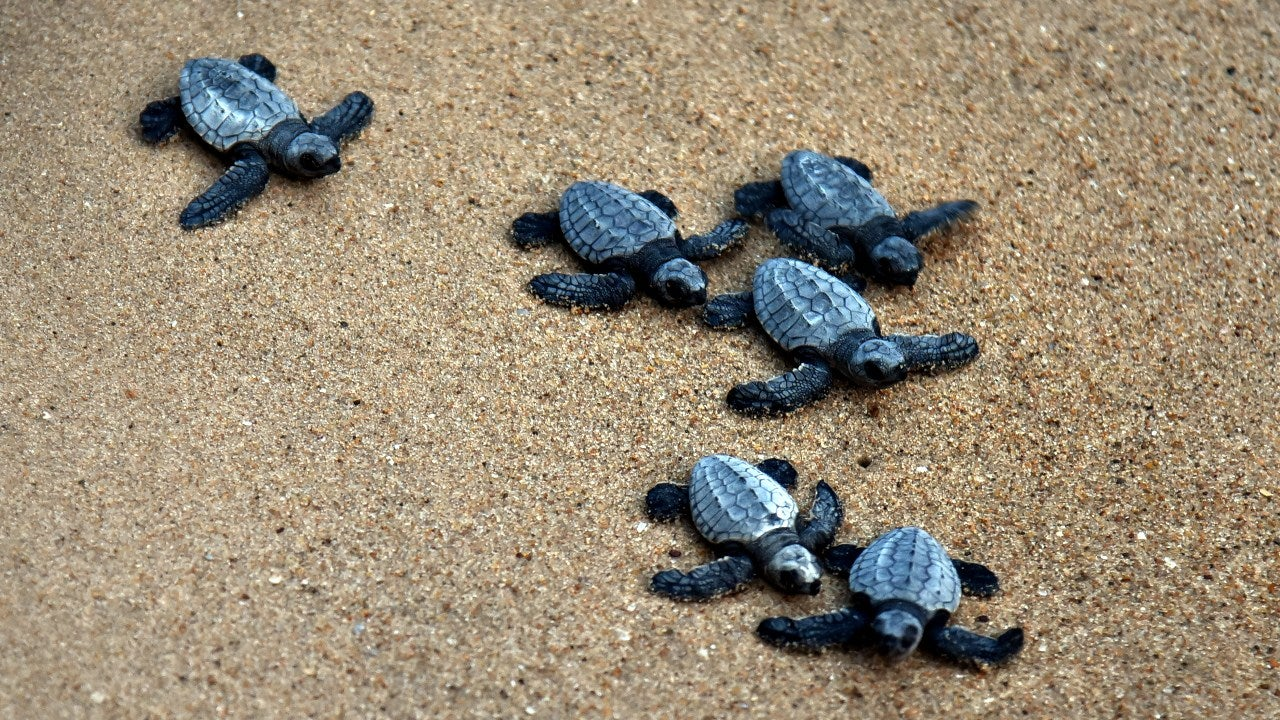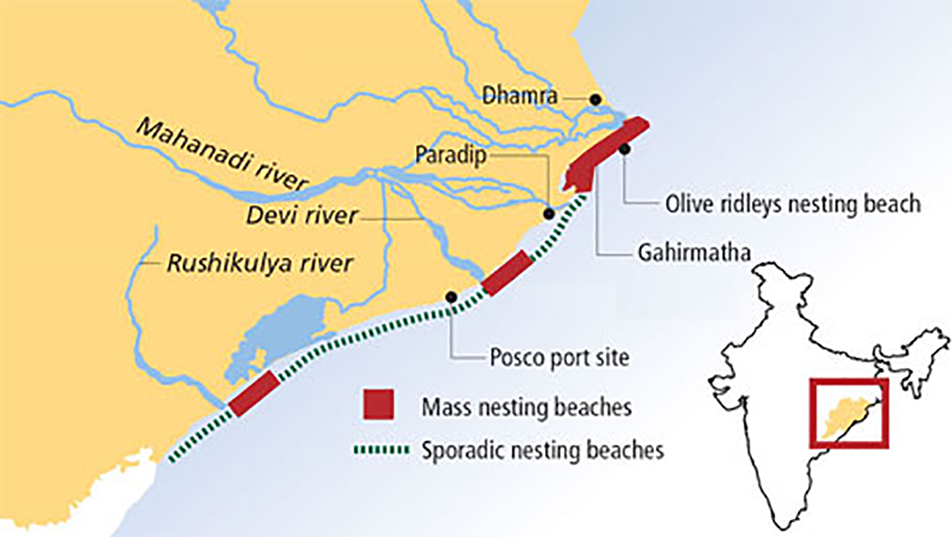Important Facts For Prelims
Mass Nesting of Olive Ridley Turtles
- 27 Apr 2023
- 4 min read
Why in News?
The Rushikulya beach in India's Odisha state recently witnessed the highest-ever congregation of Olive Ridley sea turtles in the past few decades.
- Millions of baby turtles have emerged from their eggshells and started their journey towards the Bay of Bengal using vast seawater routes.
Why is this significant?
- The Rushikulya beach is not a wildlife sanctuary, yet turtles feel safe to carry out mass nesting.
- The successful mass nesting and hatching indicates a healthy marine ecosystem and a conducive environment for sea turtles to lay eggs.
- The successful hatching of many Olive Ridley turtles is a positive sign for their conservation.
What are Olive Ridley Turtles?
- About:
- The Olive ridley turtles are the smallest and most abundant of all sea turtles found in the world.
- These turtles are carnivores and get their name from their olive-colored carapace.
- They are best known for their unique mass nesting called Arribada, where thousands of females come together on the same beach to lay eggs.
- Habitat:
- They are found in warm waters of the Pacific, Atlantic, and Indian oceans.
- Odisha’s Gahirmatha Marine Sanctuary is known as the world’s largest rookery (a colony of breeding animals) of sea turtles.
- Protection Status:
- Wildlife Protection Act, 1972: Schedule 1
- IUCN Red List: Vulnerable
- CITES: Appendix I
- Initiatives to Protect Olive Ridley Turtles:
- Operation Olivia:
- Every year, the Indian Coast Guard’s “Operation Olivia”, initiated in the early 1980s, helps protect Olive Ridley turtles as they congregate along the Odisha coast for breeding and nesting from November to December.
- It also intercepts unlawful trawling activities.
- Every year, the Indian Coast Guard’s “Operation Olivia”, initiated in the early 1980s, helps protect Olive Ridley turtles as they congregate along the Odisha coast for breeding and nesting from November to December.
- Mandatory use of Turtle Excluder Devices (TEDs):
- To reduce accidental killing in India, the Odisha government has made it mandatory for trawls to use Turtle Excluder Devices (TEDs), a net specially designed with an exit cover which allows the turtles to escape while retaining the catch.
- Tagging:
- The tagging of the endangered Olive Ridley turtles using non-corrosive metal tags is done to enable scientists to chart their movements and know the areas they visit to protect the species and their habitats.
- Operation Olivia:
Note:
- Behler Turtle Conservation Award, established in 2006, is a major annual international award honoring excellence in the field of tortoise and freshwater turtle conservation. It is considered the "Nobel Prize" of Turtle Conservation.
- It is presented annually by the Turtle Survival Alliance, IUCN Tortoise and Freshwater Turtle Specialist Group, Turtle Conservancy, and Turtle Conservation Fund.
What are the Threats Faced by Olive Ridley Turtles?
- Human Activities: Coastal development, fishing, and pollution along with destruction of their nesting habitats and accidental capture in fishing nets.
- Predators: Natural predators such as dogs, hyenas, and birds of prey that often feed on eggs or hatchlings.
- Climate Change: Rising temperatures and sea levels impact nesting habitats, making it difficult to lay eggs.
- Light Pollution: Artificial lights from nearby towns and industries can disorient hatchlings, causing them to move away from the sea and towards nearby villages.
UPSC Civil Services Examination, Previous Year Question (PYQ)
Q. Which one of the following is the national aquatic animal of India? (2015)
(a) Saltwater crocodile
(b) Olive ridley turtle
(c) Gangetic dolphin
(d) Gharial
Ans: (c)








